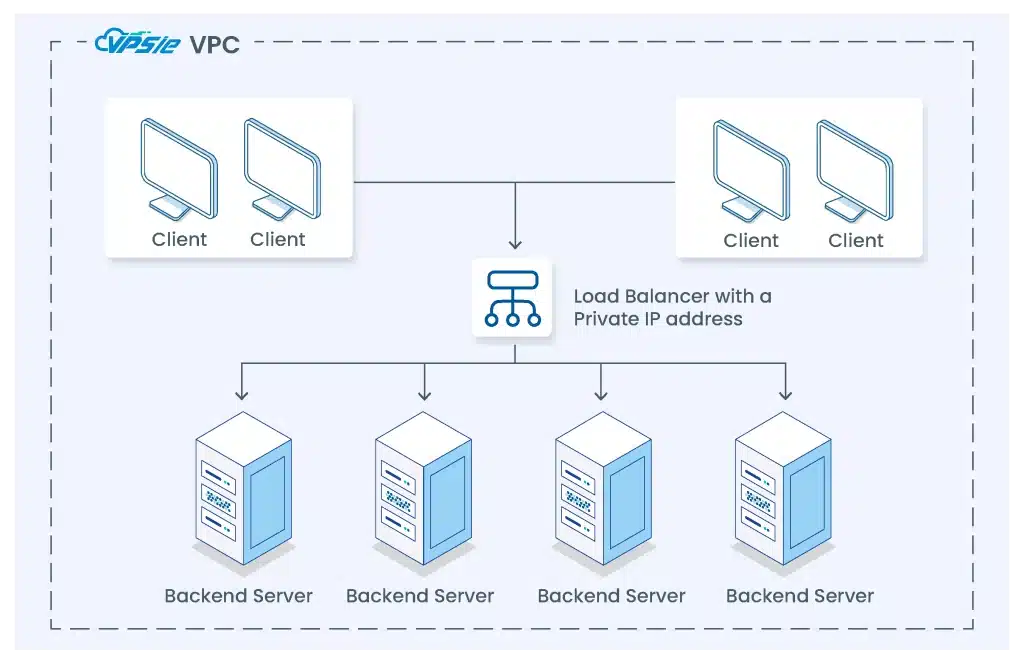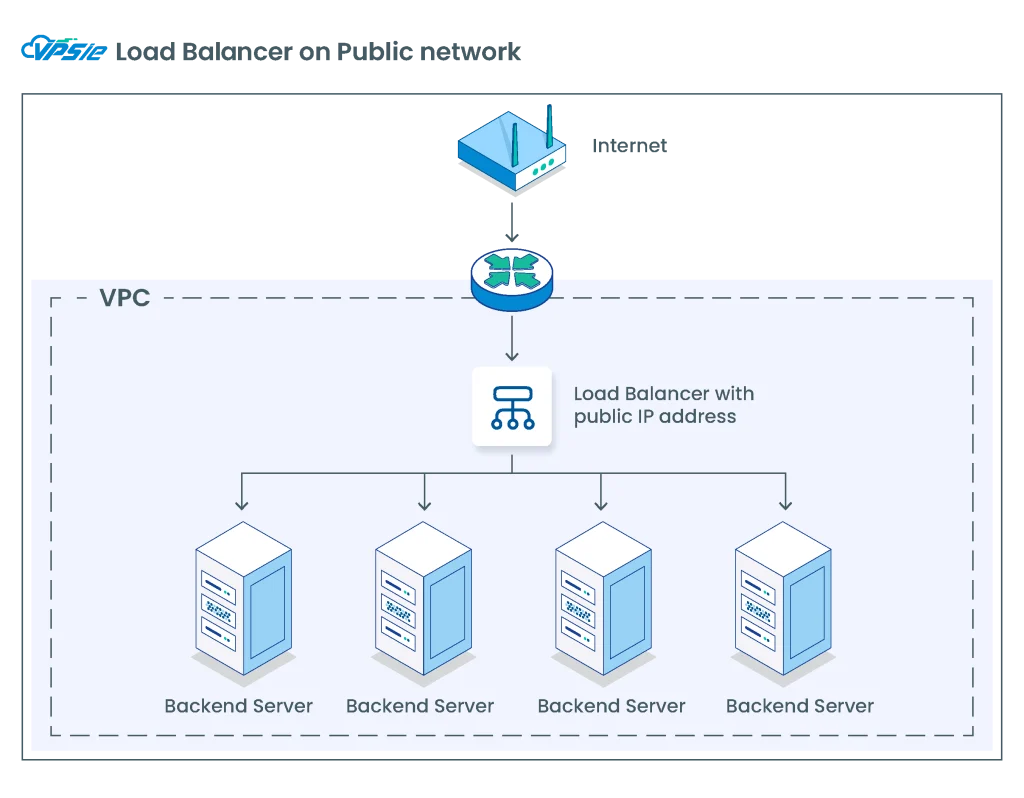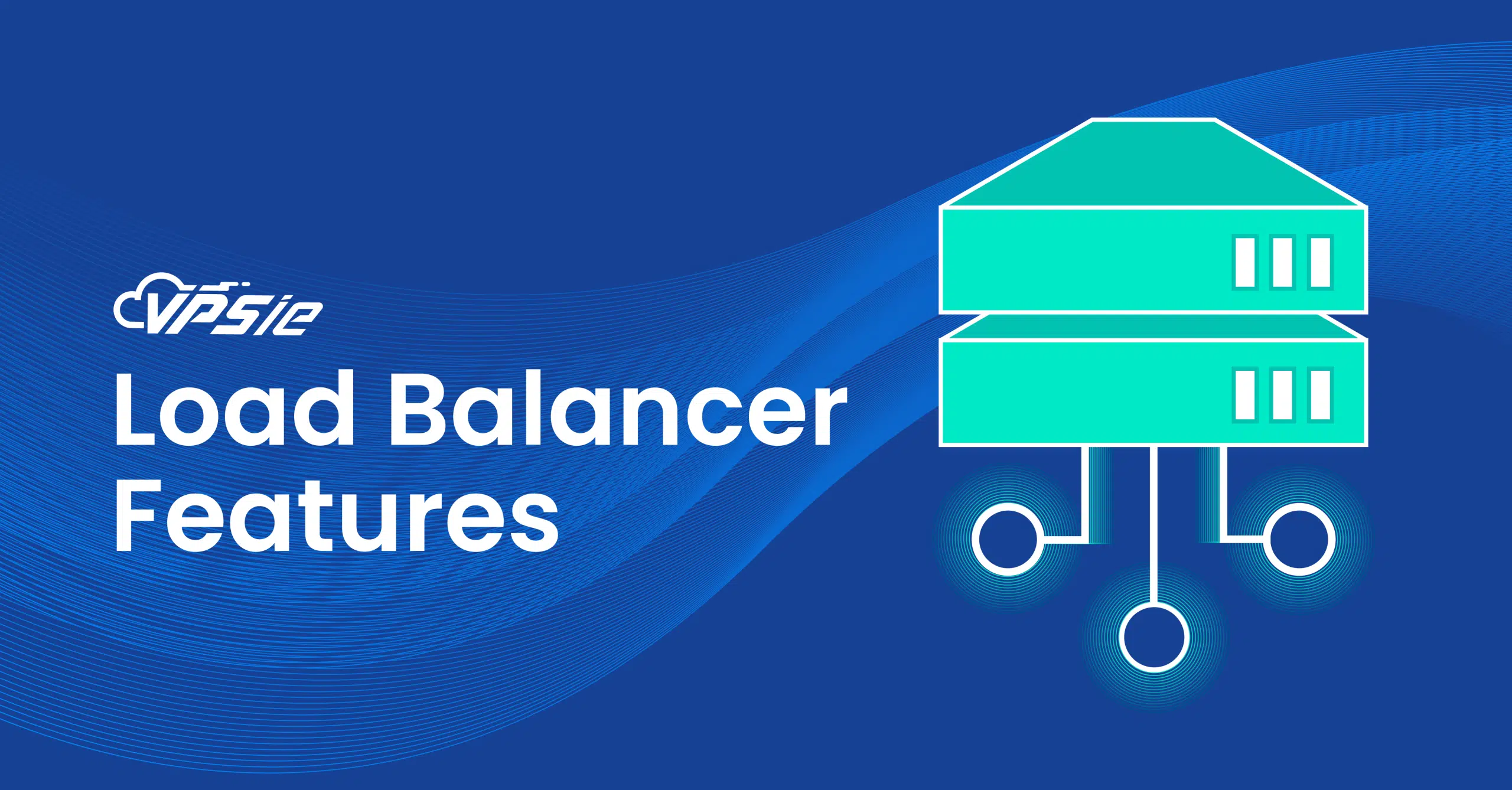VPSie Load Balancers Features
This article explores through the extensive collection of capabilities provided by VPSie’s Load Balancer service, emphasising its role in efficiently distributing traffic, improving scalability, and increasing the reliability of online services. By delving into the complexities of VPSie Load Balancer capabilities, we discover how this technology is redefining how current online platforms achieve excellent performance and maintain continuous operations. Accept the power of the VPSie load balancer as your entry point to unrivalled flexibility. By including this powerful load balancer into your architecture, you get the opportunity to revolutionise your backend infrastructure while keeping your services up and running. This translates to easily scaled operations, smooth rolling deployments, ambitious architectural overhauls, and a plethora of other disruptive possibilities.
VPSie offers three pricing tiers: Basic, Standard, and Professional.
Basic(Low-level): The Basic tier provides fundamental load balancing features with limitations on backend pool size. Ideal for low to moderately busy sites or static pages.
Tasks:
- Can handle TCP or HTTP traffic.
- Supports up to 1000 connections.
- Utilizes minimal SSL traffic or gzip compression.
Sizing:
To accommodate this workload, you’ll need at least:
- 1 CPU core
- 1 GB of RAM, either on virtual or physical infrastructure.
Standard(Mid-level): The Standard tier, available for a fee based on consumption, delivers enhanced scalability and features. Designed for high-traffic processing, it’s the choice for busy websites.
Tasks:
- Ability to handle TCP or HTTP traffic, including manipulation of HTTP requests.
- Capable of managing up to 4000 connections simultaneously.
- Efficiently handles low SSL traffic and supports gzip compression.
Sizing:
To accommodate this workload, you’ll need a virtual environment with a minimum of:
- 2 CPU cores
- 1 GB of RAM
Professional(High-level): Geared towards high-performance environments, the Professional tier offers advanced functionalities like cross-domain support, diverse protocols, low latency, and handling traffic-intensive sites or services.
Tasks:
- Able to handle TCP or HTTP traffic, including HTTP manipulation.
- Supports up to 20,000 connections.
- 10% traffic ciphered (SSL) or Compressed.
Sizing:
To fulfill this workload, the system should consist of:
- A minimum of 2 CPU cores with maximum processing speed.
- 4 GB of RAM.

The VPSie Load Balancer solution empowers you to establish either a public or private load balancer within your environment. A public load balancer comes with an internet-accessible public IP address, while a private load balancer utilizes an IP address from your hosting subnet, limited to visibility within your VPC. It’s possible to set up numerous listeners for a single IP address, distributing the load for both transport Layer 4 and Layer 7 (TCP and HTTP) traffic. Acting as reverse proxies, these load balancers can efficiently direct data traffic to any backend server accessible within the network.
VPSie Private Load Balancer: The VPSie load balancer operates with a private IP, managing client requests within a VPC and efficiently routing them to backend servers within the same VPC or multiple. Notably, this load balancer remains accessible only within the VPC environment. VPSie empowers you to select specific VPCs for server backends, even utilizing multiple VPCs, resulting in diverse benefits.

VPSie Public Load Balancer: The VPSie load balancer effectively distributes internet traffic to virtual machines, offering outbound connectivity for VMs within your virtual network.

High Availability
Each Load Balancer in the VPSie ecosystem serves as a diligent guardian, constantly monitoring the health of its backend pool components. This comprises performing automated health check routines to ensure that specified endpoints are responsive. When a backend node fails a health check, our load balancer quickly removes it from the current rotation. The faulty node is restored and recovered, ensuring that it is only reintroduced after it has been fully revived to fulfil the health check standards. This not only improves efficiency but also protects your users from interruptions.
The VPSie Load Balancer, however, does not end there. In addition to these comprehensive health-check features, it works smoothly with our auto-scaling process. This allows your infrastructure to automatically respond to changing traffic loads, providing top performance even during unexpected increases in demand. It is not simply a matter of distributing the load, it is a matter of intelligent, adaptable load distribution.
Load Balancing Algorithm
VPSie Load Balancing orchestrates an exquisite work of resource allocation by leveraging the prowess of two advanced algorithms, Round Robin and Least Connections. The Round Robin method, famed for its fairness, cyclically sends incoming requests to each available server, fairly distributing the load and prevents any single server from bearing an unfair burden. Concurrently, the Least Connections algorithm intelligently analyses each server’s real-time connection count, expertly guiding traffic to the server with the least load. This ensures efficient resource utilisation, scalability, and quick response times. Whether it’s the flawless allocation of incoming traffic or the rapid response to different loads, the algorithmic delicacy of VPSie Load Balancing ensures an impeccable user experience, bolstered by persistent availability and impeccable performance.
Protocol Support
The VPSie Load Balancer supports a wide range of protocols, meeting the different needs of current network systems. Our load balancer supports a wide range of protocols, from the fundamental HTTP and HTTPS protocols that enable web communications to the complexities of TCP and UDP protocols required for flawless data transmission. You can effortlessly configure it to manage multiple protocols and diverse ports, offering a comprehensive solution for your complex network needs. Gain precision control over traffic routing through easily customizable rules that define which ports and protocols the load balancer should adeptly listen on, as well as the meticulous manner in which it selects and forwards requests to the backend servers. This steadfast support extends to secure communication channels encrypted with SSL/TLS, assuring data integrity and privacy.
HTTP
HTTPS
HTTP/2
VPSie load balancer support the HTTP/2 standard, which is altering data transmission between clients and servers. HTTP/2 greatly reduces latency and improves overall performance by employing a single, multiplexed connection, guaranteeing that your users experience faster loading times and smoother interactions with your web resources. Your web ecosystem obtains a competitive edge with VPSie Load Balancing’s expert support for the HTTP/2 protocol, which flawlessly blends speed, efficiency, and user-centric responsiveness.
TCP
Redirect HTTP to HTTPS
This redirection improves security and privacy by guaranteeing that all communication between clients and your web applications is encrypted. Enforcing this redirection encourages the usage of HTTPS, which encrypts data transmitted between users and your website, protecting critical information from potential eavesdropping, tampering, or interception.
Health Check Mechanism
The health check mechanism in the VPSie load balancer involves a systematic process of monitoring the status and responsiveness of backend servers to ensure their availability and optimal functioning. This process is crucial for maintaining the reliability and performance of applications or services hosted on these servers. Here’s a breakdown of how the health check mechanism works in the VPSie load balancer.
By default :
Check Interval (1000ms): This parameter determines the time interval between consecutive health checks performed on the backend servers. A shorter interval allows for more frequent monitoring but might increase the load on the load balancer and the servers being checked.
Response Timeout (500ms): The response timeout is the maximum time the load balancer waits for a response from the server during a health check. If the server doesn’t respond within this time frame, it is considered unresponsive or unhealthy. A shorter timeout ensures quicker detection of unresponsive servers but might lead to false positives if the server is temporarily busy.
Unhealthy Server Threshold (2): This parameter specifies the number of consecutive failed health checks required for a server to be marked as unhealthy. In this case, if a server fails two consecutive health checks, it will be considered unhealthy and will be excluded from receiving incoming traffic.
Healthy Threshold (5): The healthy threshold is the number of consecutive successful health checks needed to consider a previously unhealthy server as healthy again. Once a server meets this threshold, it will be included in load distribution once more.
Adding Backend Servers to LB
The process is straightforward, once you’ve successfully added a domain to your load balancer, you have the opportunity to further elevate its capabilities by incorporating multiple servers. This can be accomplished by assigning the server’s IP address as a designated tag within the load balancer’s configuration. This tag serves as a unique identifier, allowing the load balancer to effectively distribute incoming traffic across the various servers associated with that specific tag. Consequently, as traffic surges or server demands fluctuate, the load balancer adeptly manages the distribution, promoting smooth performance and preventing any single server from becoming overwhelmed.
Cookie settings
In the case that the VPSie load balancer employs sticky sessions, it steers a client’s requests to a singular server for the entire duration of the user’s session. This mechanism functions by allocating a distinct identifier, frequently stored in a cookie on the client’s end, which serves as a map connecting the client to a designated server. As a result, all requests from the client throughout the session are consistently channeled to the very same server. This functionality proves valuable for upholding session continuity or safeguarding user-specific data that could be housed on a specific server. If necessary, you have the option to deactivate this feature.
SSL Certificate Generation
One advantage of utilizing the VPSie load balancer is its capability to automatically generate SSL certificates upon domain validation. This streamlined process eliminates the complexity of manual SSL setup and enhances security. By seamlessly integrating SSL certificate generation with domain validation, VPSie ensures that your applications can establish secure and encrypted connections without hassle, bolstering both user trust and data protection.





















